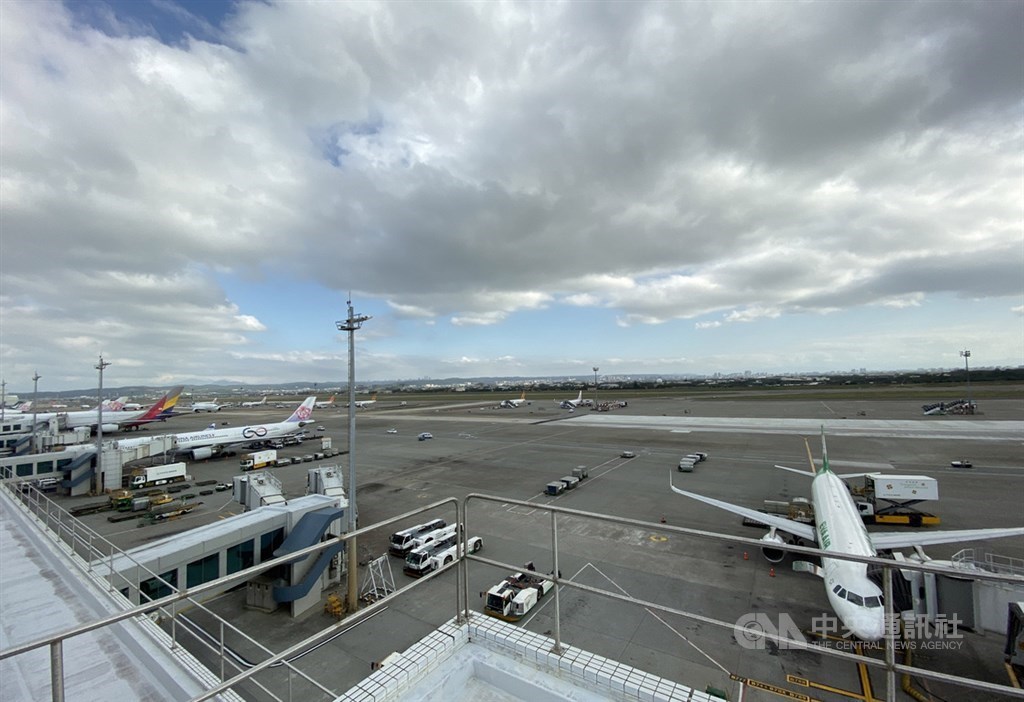Taipei, Aug. 10 (CNA) China Airlines (CAL) and EVA Airways (EVA Air), two leading Taiwanese international carriers, have both reported their highest-ever first-half net profits amid a boom in international travel and growing demand for cargo services.
In a statement on Friday, CAL said its net profit in the first six months of this year hit a new high of NT$7.14 billion (US$220 million), equivalent to earnings per share of NT$1.08.
The momentum of the global aviation industry from last year continued in the first six months of this year. This momentum, as well as an increase in the number of flights, contributed to growth in passenger revenue, the airline said.
Revenue from passenger flights rose 17.01 percent year-on-year to NT$64.68 billion in the January-June period, with Northeast Asia, Southeast Asia and North America being the three largest sources of revenue during the period, according to CAL.
CAL said freight services were impacted by high inflation, interest rate hikes and inventory adjustments in the industrial sector at the beginning of the first quarter, but the situation improved in the second quarter as demand picked up and freight rates increased.
This led to an increase in cargo revenue of 19.98 percent in the first half of the year compared to the previous year, the airline said.
CAL also expressed optimism about its outlook for the second half of the year, expecting a 25 percent increase in the number of its flights in 2024 due to strong demand for passenger flights during the summer.
Further growth is also expected in cargo traffic in the second half of the year. All ten Boeing 777F freighters ordered are to be added to the fleet this year. The airline hopes to be able to further exploit the opportunities in the market for cargo charter flights.
Also on Friday, EVA Air said in a statement that its net profit for the January-June period hit a record NT$13.38 billion, resulting in earnings per share of NT$2.31.
In the six-month period, revenue from its passenger flight division rose 17.9 percent year-on-year to NT$72.9 billion, while revenue from its cargo service division rose 17.4 percent year-on-year to NT$22.95 billion, EVA Air said.
The airline said cargo volumes rose 15.4 percent year-on-year in the first half of the year, citing growing demand for AI applications, increased demand for space from Chinese e-commerce operators and port congestion, which prompted some carriers to send their shipments by air rather than sea.
EVA Air also released its revenue figures for July, reporting a 6.33 percent year-on-year increase in consolidated sales to NT$19.88 billion as load factors increased to nearly 90 percent due to summer holiday travel.
At the same time, demand for AI servers and chips as well as continued demand from Chinese e-commerce operators have led to an increase in revenue from the freight service, the freight forwarder said.
Meanwhile, Taiwan’s third international airline, Starlux Airlines, has taken another step toward a listing on the Taiwan Stock Exchange (TWSE) alongside EVA Air and China Airlines.
Its shares are currently traded on the emerging market, but the TWSE announced earlier this week that it had approved Starlux’s application to list its shares on the exchange. Starlux intends to do so by the end of this year.
Starlux made a profit for the first time in 2023, when it reported net profit of NT$149 million and earnings per share of NT$0.08. In the first quarter of this year, net profit was NT$620 million and earnings per share was NT$0.3, beating the figures for the whole of 2023.
The airline has not yet announced its half-year results, but its consolidated revenue for the six months rose 65 percent year-on-year to NT$16.33 billion, driven by rising revenue from both passenger flights and cargo services.
In Taiwan, a company must list its shares on the emerging market for at least six months before it can apply for listing on the OTC market or the main stock exchange.

